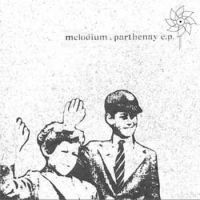Autres Directions in Music
One of my secret dreams has always been to start a record label. It only made sense — running this website has exposed me to a number of artists toiling away in obscurity in their bedrooms, basements, and garages, and continues to do so to this day. Alas, a number of other concerns has shelved this notion for the time being. Running a label takes many resources, most of which I have in far too short a supply to do my idea of what a label should be any amount of justice.
But every so often, I dust off the idea and give it a bit more thought. Over the years, I’ve worked through several possible scenarios, business plans, and contractual ideas. But regardless of the details, I’ve always known any label attempt of mine would first and foremost revolve around the Internet.
Nowadays, that’s a bygone conclusion. Everyone is doing the Web thing these days, and the Internet is obviously the future of musical distribution, whether the RIAA likes it or not. But back in the day, the idea of running an Internet-based label felt like a bold, rebellious step, the perfect way to get music to the masses while also telling the musical establishment to go screw themselves.
I was reminded of this sense of excitement while going through a couple of discs I received from the French label Autres Directions in Music (ADIM). Originally begun as a webzine in 2001 (I believe), ADIM’s goal was to move beyond merely writing about music, and eventually start releasing albums of their own, and find ways to support the artists while also making the music as widely available as possible.
Which is where the Web came in. Rather than try to deal with many of the obstacles of running a label, the ADIM crew seems to have decided to sidestep them altogether.
Rather than undergo the costly process of printing and manufacturing, all of ADIM’s releases are available, free of charge, as downloadable MP3s (though albums can be purchased, on disc, for a small fee if you’re unable to download them). The albums can be stored in whatever format the listener deems preferable (CD, minidisk, etc.), and all artwork is available for download and printing. Meanwhile, all musical rights and responsibilities remain with the artists, rather than the label. Essentially, the label is nothing more than a resource, a conduit and storage house rolled into one.
Now, I’ll admit that I was a mite skeptical when I read that all of ADIM’s music was free. I thought that perhaps the low price was indicative of the quality. Thankfully, the exact opposite turned out to be true. All 4 CDs I received are quite outstanding, and quite diverse in their styles.

Seasonal LP by Dudley (Review)
The word pleasant sums up this CD quite nicely — and I mean that in every good way imaginable.
Parthenay EP by Melodium (Review)
Melodium attempts to take purely electronic arrangements and make them sound organic and natural.

Simples Visions by Harpagès (Review)
Melodium attempts to take purely electronic arrangements and make them sound organic and natural.
So far, these are the only things ADIM has released, but they’ve already established a pretty solid track record… at least, as far as I’m concerned. And there are 3 more releases planned for the coming months, as well as an indefinitely delayed Melodium LP.
Of course, nothing ADIM is doing is at all unique, at least not these days. Hush Records provides a number of eAlbums for download complete with artwork, and sites like Magnatune allow you to listen to all of their releases for free (though downloading requires a slight fee). And that’s just the tip of the iceberg. But even so, I still find it very encouraging all around to see labels utilizing new media to make otherwise obscure music readily available to a worldwide audience. And it’s doubly encouraging when the music is of such quality and beauty, as is the case with ADIM and their artists.